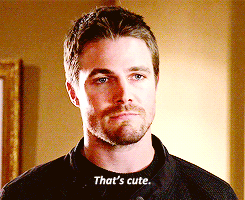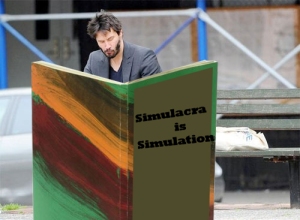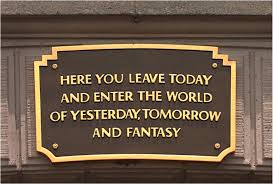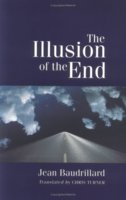Welcome to the summary page of my Canonical Text Presentation!

You’re excited too, right? Image hosted on Tumblr.
Simulacra and Simulation

Oh, Mr. Reeves, catching up on your Simulacra/Simulation. Image hosted on Tumblr.
Baudrillard’s text, Simulacra and Simulation, explores the ways in simulacrum, which is “a copy without an original,” is emerging through mass reproduction in the contemporary culture and the digital age. To explore simulation, simulacrum, and the hyperreal (which is “more real than real” in order to show that the real is not real), Baudrillard looks at Disney, the film Apocalypse Now, holograms, science fiction, and the China Syndome (among others, but I’m not going to name them all). Disney is definitely a source for analysis for Baudrillard, as he returns to Disney and his company in other words (as happens in The Illusion of the End) for Disneyland in California acts as a perfect example of the hyperreal. For Baudrillard, the idea that society is real is false and that “It is no longer a question of a false representation of reality (ideology) but of concealing the fact that the real is no longer real, and thus saving the reality principle. The imaginary of Disneyland is neither true nor false, it is a deterrence machine set up in order to rejuvenate the fiction of the real in the opposite camp” (12-13). Continue with Disneyland, Los Angeles, by having amusement parks like Disneyland within its boundaries, is a “city of incredible proportions but without space, without dimension” (13). Disneyland, by having boundaries (it is clear where the amusement park physically ends), can (in a very strange way) fill in the gaps that remain in the “real” city of Los Angeles. It is more real than what should be considered real, even though we are aware that everything within that city is not real. It is a performance in which we all engage, willingly so whatever the reason.

Welcome to the hyperreal. Image hosted on the blog Lost Communication.
Baudrillard sees this occurring in other parts of societies, even history (though I will talk about that more below). In his chapter “The Remainder,” he points out that the statement “When everything is taken away, nothing is left” is false because there is no remainder (143): “Perhaps only in the mirror can the question be posed: which, the real or the image, is the reflection of the other?…There is no longer a respective position–the real disappearing to make room for an image, more real than the real, and conversely– the remainder disappearing form the assigned location to resurface inside out, in what it was the remainder of, etc.” (143-144). If nothing is “real” anymore, then what is becoming increasingly prevalent is the simulacrum. To discuss this, Baudrillard points out that there are “three orders of simulacra”:
-“simulacra that are natural, naturalist, founded on the image, on imitation and counterfeit, that are harmonious, optimistic, and that aim for the restitution or the ideal institution of nature made in God’s image” – “imaginary of the utopia”
-“simulacra that are productive, productivist, founded on energy, force, its materialization by the machine and in the whole system of production — a Promethean aim of a continuous globalization and expansion, of an indefinite liberation of energy (desire belongs to the utopias related to this order of simulacra);” – “science fiction”
-“simulacra of simulation, founded on information, the model, the cybernetic game — total operationality, hyperreality, aim of total control” (121)
Baudrillard’s writing is more than a little nihilistic, something he admits to while discussing the two revolutions (in the nineteenth century and in the twentieth century): “I am a nihilist. I observe, I accept, I assume the immense process of the destruction of appearances (and of the seduction of appearances) in the service of meaning (representation, history, criticism, etc.) that is the fundamental fact of the nineteenth century. The true revolution of the nineteenth century, of modernity, is the radical destruction of appearances, the disenchantment of the world and its abandonment to the violence of interpretation and history. I observe, I accept, I assume, I analyze the second revolution, that of the twentieth century, that of postmodernity, which is the immense process of the destruction of meaning, equal to the earlier destruction of appearances. He who strikes with meaning is killed by meaning” (16-161). In a world of mass reproduction, we have copies of copies, but where is the “real”? And when approaching “reality” with its false appearances emptied of meaning, how can one not be a nihilist?

Mirror: Which one is the reflection? The real or the image? Image hosted on the wiki Anime Arts.
The Illusion of the End

So the concept of history comes to a violently quiet death. Image hosted on Good Reads.
Baudrillard’s later text, The Illusion of the End, uses the concept of “pataphysics,” which is the “the science of imaginary solutions and the laws governing exceptions” (Hugill), in order to show how history as we think about it is no longer real. To flesh out his argument, Baudrillard tackles issues like the Gulf War, Y2K Mania, Cold War and the thawing of the Eastern bloc, the pentito, Chernobyl, Freedom, the Timisoara Massacre, and a group known as Stealth Agency.
But what is Baudrillard’s claim about the end point of history?
How could there be no history?
What does the man mean?
Throughout his book, Baudrillard is looking at the ways in which history is being revised and events are being repented, with the way we are “whitewashing” history at the brink of the new millennium: “Our societies have all become revisionistic: they are quietly rethinking everything, laundering their political crimes, their scandals, licking their wounds, fuelling their ends” (22). He starts by introducing three possible vanishings (pataphysics at work) of history:
- “one might suppose that the acceleration of modernity, of technology, events and media, of all exchanges– economic, political and sexual — has propelled us to ‘escape velocity,’ with the result that we have flown free of the referential sphere of the real and of history,” with history seen as “the kind of crystallization or significant crystallization of events” and reality as “the kind of coherent unfolding of causes and effects” (1). To flesh this out, Baudrillard draws on more physics concepts: “through the impulse for total dissemination and circulation, every event is granted its own liberation; every fact becomes atomic, nuclear, and pursues its trajectory into the void” with it having “to be fragmented like a particle” (2).
- This hypothesis deals with a slowing down, rather than reaching an escape velocity, as it has to do with “the slowing down of history when it rubs up against the astral body of the ‘silent majorities’. Our societies are dominated by this mass process, not just in the demographic and sociological sense, but in the sense of a ‘critical mass’, of passing beyond a point of no-return” (3). — Absorption is a key mental image here, as “Events follow one upon another, cancelling each other out in a state of indifference” (3)
- The third hypothesis hinges on an analogy about music and our cultural obsession with “high fidelity” to the point where the music is no longer music (think auto-tune, as it leaves the singer’s voice perfectly flawless, though no one’s voice has such a quality). For history, “by dint of the sophistication of events and information, history ceases to exist as such. Immediate high-powered broadcasting, special effects, secondary effects, fading and that famous feedback effect which is produced in acoustics by a source and a receiver being too close together and in history by an event and its dissemination being too close together and thus interfering disastrously — a short-circuit between cause and effect like that between the object and the experimenting subject in microphysics” (6).
History is no longer history because events are no longer the source for news as the news is now the source for events. Ideologies that had shaped “history” are being rewritten, as with the Cold War where our perceptions of the conflict are now Good vs. Evil rather than two opposing ideologies regarding Freedom. As mass media turns everything into representation of themselves, rather than concrete events, emptying history of its meaning.

With just a click of a button. Image hosted on the website RAINN.
Press ever onward, virtual traveler

First, I must admit that I will probably have to read this guy for the rest of my days in order to understand a minute fraction of what he is talking about. However, I do sort of understand Baudrillard’s points on history mainly because I am a sucker for anything that questions our historical consciousness to appropriate Flusser. That being said, I find Baudrillard’s argument that our media has now totally reconceptualized the meaning of history itself mind blowing. So has the remediation process itself become history? And what does he mean by concrete events? I ask because the idea of representation creating history did not just arrive with digital technology; it has been going on since humankind decided to take up writing, and even before that. In this sense, history has ALWAYS been reliant on a medium and mediator, never completely on “real events”.
Pingback: This is Canon-My Responses to my Canon Text Presentations | The Darker Sister